
Fresh herbs are amazing. Not only are they easy to grow, but you can also use them in countless ways. Plus, if you have more than you need, you can also dry the herb or freeze it.
Today, we’re interested in basil, which comes from the mint family and is popular throughout the world. It’s most famously used in caprese salad or to create pesto, but can also be used to make compound butter, as a sandwich ingredient, in soups, or even in cocktails.
However, the conversation about how to use fresh basil takes us beyond just those uses. There are many other options at your fingertips, ones that c
Most of the approaches we’re talking about today focus on sweet basil, also called Genovese basil or sweet Genovese. This is the most common type of basil. It’s the one you’ll find at grocery stores and may even grow at home. But, this is just one option. Many other types of basil are edible too and each offers its own interesting flavors.
How To Use Fresh Basil (13 Fantastic Ideas!)

Make Caprese Salad
It’s hard to get more classic than a caprese salad. Not only is this a delicious dish, but it’s also simple and packed with flavor.
You probably already know how to make the salad too. It simply consists of tomatoes, fresh mozzarella cheese, and fresh basil.
These can be arranged in various ways. For example, some people slice the tomatoes and mozzarella before including them in the salad. Others leave them whole or perhaps thread them onto skewers instead. Olive oil or balsamic vinegar are often drizzled on top to make the salad more exciting, although these aren’t essential.
Put It On Your Pizza
Basil is a fantastic addition to pizza (or pizza dough!), adding a delightful contrasting flavor. Whenever possible, be sure to add the fresh basil leaves after cooking the pizza rather than before.
The timing really does matter, as basil leaves are easily bruised and oxidize quickly. If you add them before cooking your pizza, they often shrivel up and lose much of their appealing flavor.
Use It In Soup
Then there’s soup. Sometimes you’ll be able to blend the basil in as one of the many soup ingredients. Other times you might simply use fresh basil leaves as a garnish.
As with pizza, you don’t want to include the basil too early. Instead, fresh herbs are best used as one of the last additions to your recipe. That way, you get the best possible flavor from them.
Thread Onto Skewers
Skewers are popular at parties, picnics, and BBQs, allowing guests to enjoy food without getting their fingers dirty. There are plenty of styles too, including cured meat and cheese skewers, meat-based skewers for the grill, and fresh fruit skewers.
No matter which style you choose, fresh basil leaves are a delightful addition. They contrast your other flavors, making the skewers much more interesting than they were before.
You could even start with the classic caprese salad and then add extra ingredients, like cured meat or beef. Or, find your own recipe.
Make Pesto
The classic version of pesto is made using basil, pine nuts, garlic, olive oil, and parmesan. Basil dominates the flavor profile, while the other ingredients complement it to create a delicious, well-balanced dip.
Pesto can be used in recipes, like creating a simple basil pasta sauce. Or, you can use it directly, like as a sandwich spread or a dip for fresh vegetables. Plus, pesto is easy to make and tastes much better than the store-bought versions. Why not try making it yourself?
Try It As A Cocktail Ingredient

Herbs are becoming increasingly popular in cocktails, as they provide an exceptional flavor contrast. The approach is much needed too, as many modern cocktails are too sugary or are simply underwhelming.
You have a few options with basil. The first is to simply use it as a garnish, which is easy, but a bit boring. You can also muddle fresh basil leaves when you’re making a cocktail. Doing so provides plenty of flavor and requires hardly any prep work.
The final option is to make basil simple syrup. This is a sugary liquid like regular simple syrup, except that it uses fresh basil as a key ingredient. The syrup is easy to make and can be used in many recipes, including cocktails, mocktails, desserts, and lemonade.
Make Candied Basil
Candied basil is a fascinating way to experiment with the flavor of basil and really get a sense of its nuances. The idea is incredibly simple. You’re just dipping basil leaves in an egg white wash and then in sugar. Once the basil leaves are dry, you end up with a fantastic sweet-savory flavor balance.
The flavor balance might catch you by surprise, as candying highlights some of the floral sweet notes in basil that aren’t normally so obvious. That said, candied basil is still intense. You’re not likely to consume many pieces of it at a time.
Why not take this approach with different types of basil? There are plenty of them, including French basil, cinnamon basil, Thai basil, and more. Each type has its own flavor nuances and would wonderfully contrast with sugar.
Grow More Of It
Basil is a great herb to grow at home, as you can easily propagate more from cuttings. To do so, you need to encourage your cutting to grow roots. This can be done by using water or a light soil substrate.
Once the cutting has grown sufficient roots, you can then transplant it into soil and start growing a new basil plant. This approach can even work with basil from the grocery store, if it is fresh enough.
Try It As A Sandwich Ingredient
Instead of looking for a complex recipe, why not just include basil as an ingredient in your sandwiches? This could be as simple as adding a few leaves into the sandwich. Or, you might make basil pesto instead.
Either way, the sweet and pungent flavor of basil nicely contrasts the other ingredients in your sandwich. Why not try this with your favorite sandwich recipe? You might be pleasantly surprised at the results.
Make Basil Compound Butter
Compound butter is one of the best ways to use fresh herbs, partly because you get a versatile ingredient that can be used in many recipes.
You can also experiment with the ingredients. For example, fresh basil, sea salt, and garlic work well together, as do basil, sea salt, and lemon zest. You could even try including a second herb along with your butter.
Try to make small amounts of the butter at a time, as it doesn’t have a long shelf life. It will normally last just a week or so, similar to how long your fresh basil would last on its own.
Make Basil Salt
You can also create your own gourmet salt using basil. To do so, wash and dry your fresh basil, chop it, then blitz the basil together with salt in your blender. Once everything is combined, you just need to dry out the salt (either in the oven or via air drying).
Salt has preserving properties, so it will help your fresh basil to last longer. You can also use the basil salt in many situations, such as sprinkling it on sliced tomatoes or using it to season steak.
Infuse Some Basil Oil
Herbal oils can be simple or complex. Many simply involve infusing olive oil with a favorite herb, which makes your olive oil taste much more interesting.
However, there are also other approaches. For basil, a combination of olive oil, garlic, basil, and red pepper flakes works especially well. You could add some lemon juice into the mix for an extra boost.
Here, you’d mix the ingredients with the olive oil, rather than making an infusion. Doing so is helpful if you need the oil quickly, perhaps for a party.
Add Basil Leaves To Your Bath
Why not think outside the box and make a calming bath using basil? Doing so can be as simple as adding some fresh basil leaves straight to your bath water.
You might include some Epsom salts as well. These would make your bath even more calming and special.
5 Delicious Recipes Using Fresh Basil

Basil Vinaigrette
Let’s begin with something easy – delicious Basil Vinaigrette. The recipe uses vinegar, basil leaves, garlic, and olive oil as the main ingredients, with a few others added for extra flavor.
Not only do the ingredients work together exceptionally well, but the recipe also requires barely any effort. As such, it’s an easy one to make when you’re short of time or energy.
You’re not limited to using this as a salad dressing. The texture and flavor combination works well in many other situations as well. Why not use this as a sauce over some of your favorite dishes, like chicken, vegetables, or pasta?
Basil Ice Cream
This Basil Ice Cream proves that the herb isn’t just limited to savory applications, it works well in sweet dishes too, including ice cream. But don’t worry. The ice cream doesn’t taste like basil pesto. It has a distinct flavor of its own, one that leans into the underlying sweetness of basil.
The featured recipe relies on classic ice cream ingredients, including whole milk, heavy cream, sugar, and egg yolks. The basil leaves are the only unusual ingredient in the mix and make a huge difference to the final flavor profile.
Unfortunately, you will need an ice cream maker to prepare the recipe. If you don’t have one, try including blended basil leaves in your own favorite ice cream recipe. Doing so should still work well, even if you focus on plant-based ice cream, rather than the regular dairy kind.
20 Minute Garlic Basil Brown Butter Pasta
Then there’s this 20 Minute Garlic Basil Brown Butter Pasta. As the name suggests, the recipe features a variety of interesting flavors, including garlic, basil, tomatoes, and even butter.
The combination might sound overwhelming at first, yet the ingredients all work well together to create a fresh and nuanced pasta dish. The use of butter is especially stunning. This brings the recipe to life and even leads to a noticeable caramelized flavor that makes everything perfect.
This recipe also pairs excellently with fresh cherry tomatoes as a garnish. While these aren’t essential, they certainly make the pasta taste better.
Thai Basil Chicken
This Thai Basil Chicken recipe focuses on Thai flavors and tastes every bit as wonderful as it sounds. The ingredients selection includes both dark soy and light soy, plus sugar, oyster sauce, garlic, and basil.
Interestingly, the recipe calls for Thai basil rather than conventional sweet basil. This is the perfect variety for the recipe, as it includes a mild aniseed flavor that sweet basil doesn’t offer. Still, if you don’t have Thai basil on hand, the recipe will still work well with regular basil.
Grilled NY Strip Steak With Basil Garlic Sauce
Finally, we have this Grilled NY Strip Steak with Basil Garlic Sauce. The recipe is unusual, as it relies on cubes of chopped basil and a cube of garlic, which seem to be products you can buy.
However, you could easily make the recipe by using freshly chopped basil leaves. It’s likely to taste even better this way. You can also experiment with your steak, as the basil and garlic combo should work well with any cut of steak.
Ways To Preserve Basil

Despite all these ideas, you might sometimes have more basil than you know what to do with. It doesn’t keep long either, so you’ll need some way to preserve the herb, like the following.
Dry It
Drying herbs makes them last much longer (often a year or more), while also concentrating their flavor. Doing so also means you always have some basil for your recipes, even when it isn’t in season.
Just be careful with substitutions. You’ll normally want just a teaspoon of dried basil for every tablespoon of fresh basil in your recipe. Don’t use more dried basil than this or the flavor will overwhelm your recipe.
Your oven is the best tool for drying your basil. You’ll need to wash the basil, dry it, and remove the stems. Then the basil can be laid out on parchment paper on a baking tray and baked at the lowest temperature in your oven. It should fully dry out within a few hours.
Freeze Basil
Basil isn’t a very hardy herb. Because of this, it’s better to turn basil into a paste and freeze that, rather than freezing basil leaves directly.
First, you’ll need to rinse and blanch your basil. Blanching is as simple as dropping the basil into boiling water for roughly 10 seconds then straight into ice water. This helps the basil survive the freezing process better.
Then, dry your basil, get rid of the stems, and add the leaves to a food processor. Blitz the basil leaves with a little olive oil until you get a paste. This can then be frozen in an ice cube tray.
These little cubes of basil can be used straight from the freezer for hot dishes. For cold ones, you’ll need to thaw and drain the puree first.
Tips For Using Fresh Basil

Don’t Add It Too Soon
If you’re using heat, fresh herbs should normally be added late in the process. If you add basil too early, then most of the flavor is lost. The leaves will wilt as well, making the basil look unattractive.
It’s normally best to add basil in the last five or ten minutes of cooking. If you’re following a recipe, it should tell you the best time for your basil.
Use The Stems Too
Basil leaves are the softest and most popular part of the plant. However, this doesn’t mean you should always ditch the stems.
Basil stems can still be useful in some situations, including soups and sauces. You can also cut the stems up finely and mix them into your recipes. Doing so stops the stems from being too tough while still providing plenty of flavor.
Use Sweet Basil As Your Go-To
Most recipes are designed for sweet basil, so it’s best to stick to this as your go-to variety. If you’re going to experiment with other types of basil, make sure you understand their flavor profiles, as they will change your recipe (sometimes dramatically).
Store It Carefully
The way you store your basil will impact its shelf life and flavor profile. A common approach is to basically create a basil bouquet, where you’re storing the basil on a counter with the stems in a few inches of water.
The catch is that you should also loosely cover the tops of the basil. A thin plastic bag works best for this, like one designed for produce.
Keeping your basil in the fridge works too. Here, it’s best to remove the stems from your basil, wrap the leaves in a paper towel, and place them in a sealed plastic bag. The paper towel and plastic bag ensure your basil isn’t harmed by the air and coldness of the fridge.
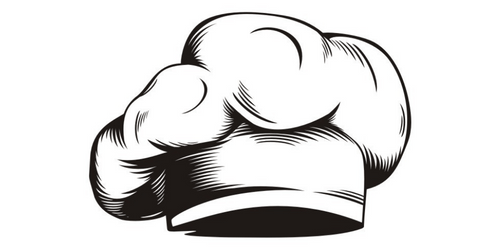
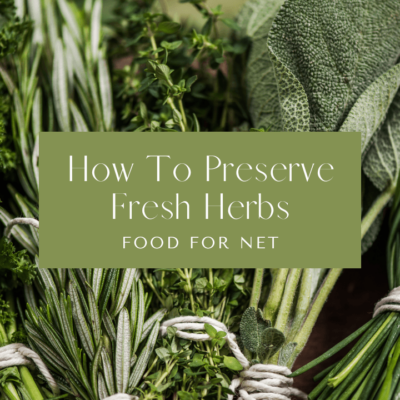
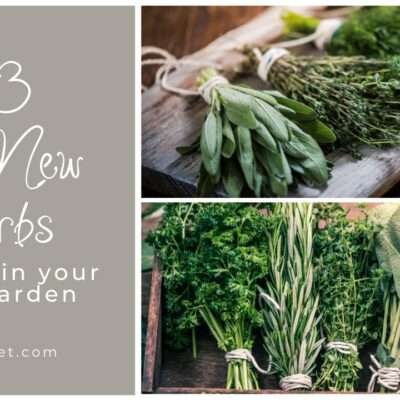


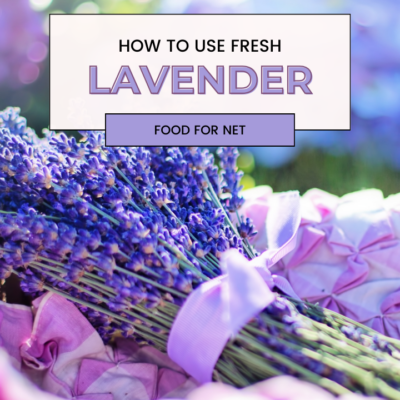
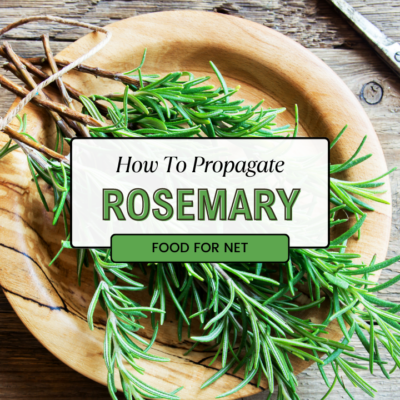
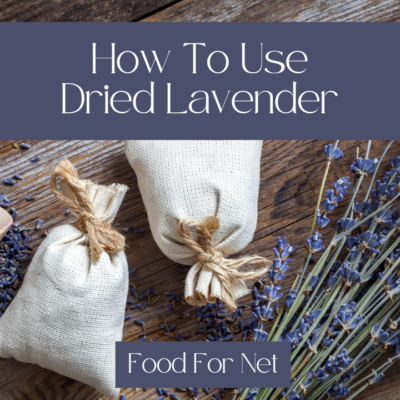
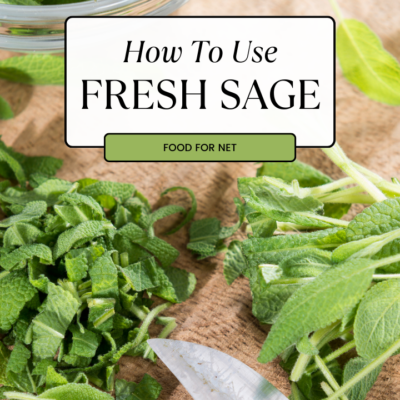
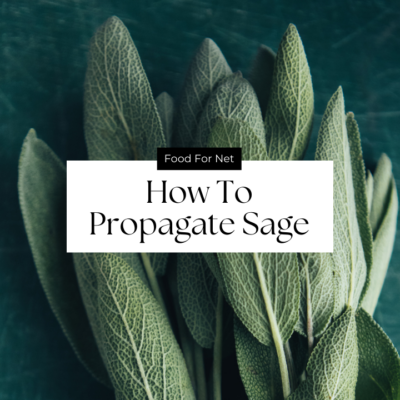






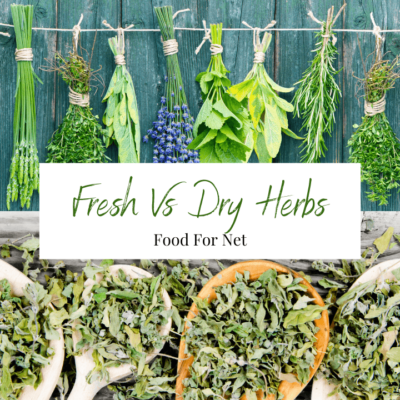
 Substitutes For Light Cream
Substitutes For Light Cream